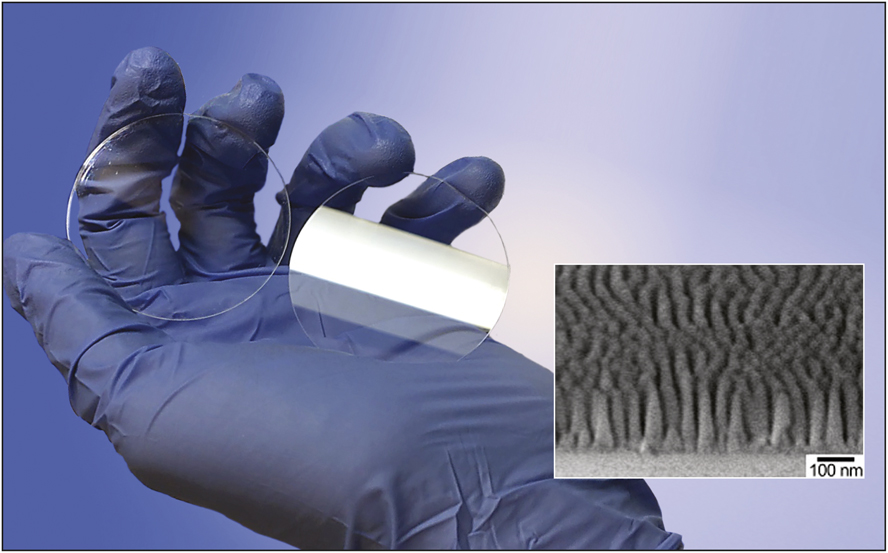By etching tiny nanoscale features into glass and plastic surfaces, researchers have found a way to cut their light reflection to almost zero, rendering them nearly invisible. This could be a much-needed solution to the annoying glare from phone, TV, and computer screens. Apart from making consumer displays glare-free over a wide range of viewing angles, the nanotextured glass could also make the surface water-repelling and self-cleaning.
When light travels from air to glass, the abrupt change in refractive index between the materials makes around 8% of light bounce back. Manufacturers coat device displays and eyeglasses with antireflective films to reduce this unwanted reflection. Antireflective coatings have a refractive index and thickness designed to make reflected light waves interfere in a way that they cancel each other out. But the films only work at a certain wavelength.
A better way to completely eliminate reflection is to get rid of the abrupt change in refractive index at the air–glass interface. Texturing the surface by creating tiny nanoscale structures is one way to do this. These structures are smaller than the wavelength of light. “As the light moves through this forest of structures into glass, it sees a gradual change in the refractive index,” says Charles Black, director of the Center for Functional Nanomaterials at Brookhaven National Laboratory. “It’s the ultimate way to do antireflection in that it works across all wavelengths.”

Glass surfaces with etched nanotextures reflect so little light that they become essentially invisible, as seen in this image, which compares the glare from a conventional piece of glass (right) to that from nanotextured glass (left), which shows no glare at all. (Inset) Cross-sectional scanning electron microscope image shows a glass surface textured with 170-nm-tall cones. The cones are packed very close to each other, only 52 nm apart. A two-inch piece of glass has 900 billion cones on its surface. Credit: Brookhaven National Laboratory.
Such antireflective nanotexturing is found in moth eyes and cicada wings. Researchers have tried to mimic such nanostructures with mixed success.
Black and his colleagues used block copolymers in their approach, as described in an article published in a recent issue of Applied Physics Letters (doi:10.1063/1.5000965). They first made a template with the block copolymer polystyrene-b-poly(methyl methacrylate), which self-assembles into a periodic pattern. They then used plasma etching to transfer this pattern to a glass surface. They placed the template on a glass surface, and a hot plasma gas etched out the tiny areas that were not protected by the template. This left the glass surface covered with densely packed cone-shaped structures that were less than 10 nm in width.
Covering both surfaces of the glass with 280-nm-tall nanocones reduced the reflections of all visible and near-infrared wavelengths to less than 0.2%. Taller nanocones made the glass surface more antireflective, the researchers found.
Black’s research team has used a similar technique before to create nanotextures on silicon to increase light absorption in solar cells. The textured surface should stay dust-free since the space between the cones is too tiny for dust particles, which are typically tens of micrometers in size.
The techniques are compatible with industrial processes used for microelectronics and displays, says Black, which makes them amenable to being made practical. The researchers now need to investigate whether the nanostructured glass will be robust and economical enough for commercial use.


